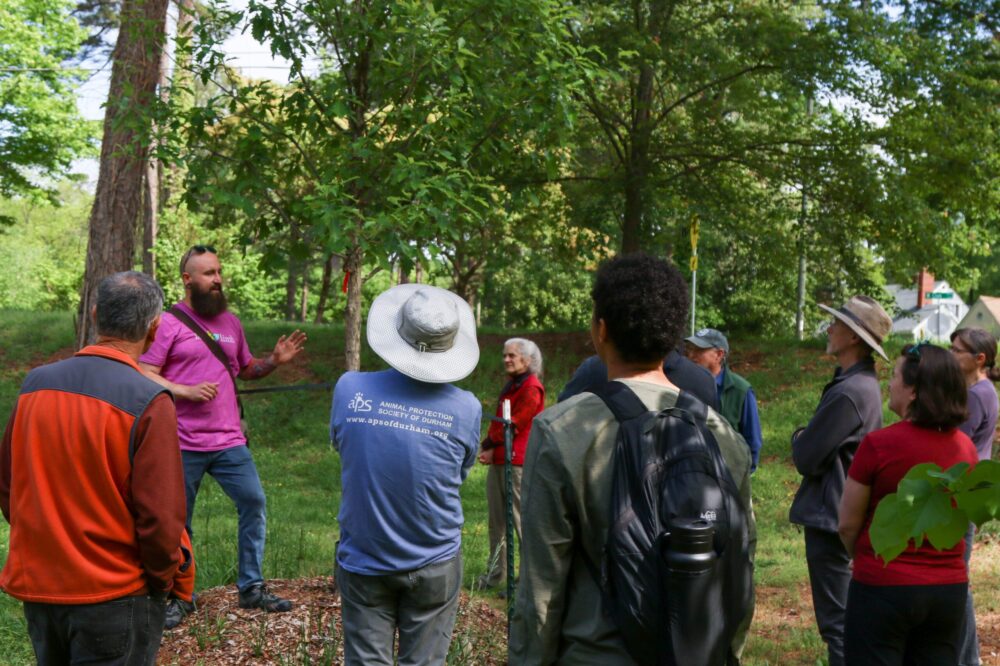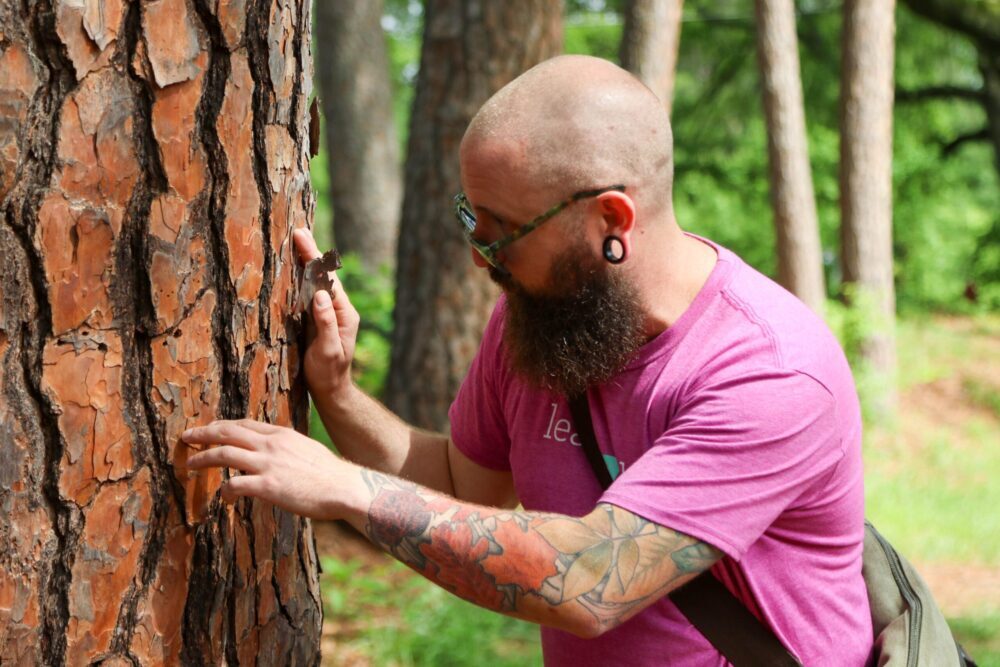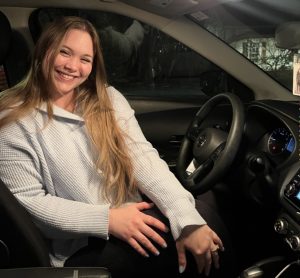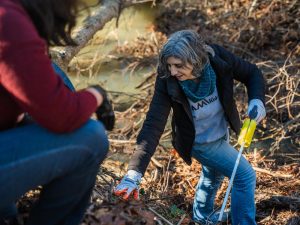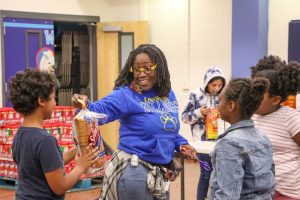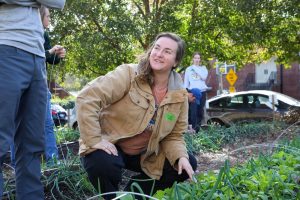As people arrived under the picnic shelter in Oval Park on Saturday morning by bike, car, and foot, they introduced themselves with their names, and unusual identifier: the kinds of trees on their property.
There was Tanya, with a large oak that she decorates with string lights around the holidays. David and Elizabeth, who brought their crawling daughter Clara, tend to the loblolly pines, mulberries, oaks, and three-leafed maples in their front and backyards. Galia, who has an old willow oak on her property, said, “I’m here because I want to learn how to be a better Lorax!”
The occasion? A free neighborhood event called “Saving Our Tree Canopy: Walk & Learn Workshop.” Organized by the Old West Durham Neighborhood Association and funded by the Duke-Durham Neighborhood Partnership, the workshop educated attendees on tree and soil health, pruning, and extending the lives of older trees.
As some of the oldest neighborhoods in the city, Old West Durham and neighboring Watts Hospital-Hillandale are home to many vulnerable mature trees. Fred Broadwell, 61, interim president of the Old West Durham Neighborhood Association, told The 9th Street Journal, “We’ve been seeing old oak trees cut down and limbs falling at a faster rate, and so there’s concern and, to some extent, fear that the trees are becoming a hazard.”
With that issue in mind, the association organized Saturday’s workshop with the tree-care organization Leaf & Limb.
Matt Archibald, 32, an arborist at Leaf & Limb, led the workshop.
“It never ceases to amaze me how much life is within our yards and our streets and our parks,” Archibald told the group. “Trees are just amazing.”
After introductions, the group strolled toward a towering cluster of loblolly pines. There, they discussed the lifespan of urban trees.
Many amateur gardeners believe that street trees can only live to 75. But, Archibald said, “That’s a rule made up by people who don’t know trees.”
Most urban trees can live for more than 200 years, but unfavorable conditions cause stress and limit their lifespans, he said.
“If we plant a tree and it’s growing up in a really rough environment, with people walking over it and poor soil and pruning, it’s constantly going through some type of stress,” Archibald explained, gesturing to an oak down the block. “That’s why that tree will die.”
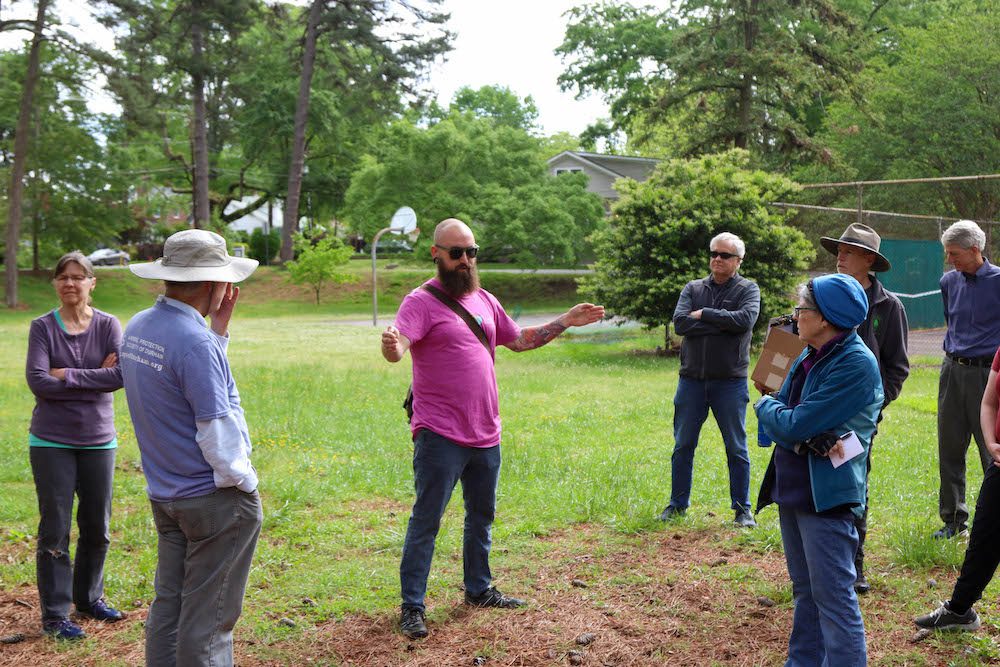
Later, the group traversed Oval Park to examine a freshly planted swamp white oak tree, standing alone in a corner of the park. Birds chirped in the canopy overhead as Broadwell explained that the tree was planted in honor of former Durham Mayor Steve Schewel.
The tree was young, and appeared healthy to Archibald. But its lonely location was of slight concern.
“Trees are communal organisms,” he said. “They do best in their natural environments, in forests, where a lot of trees grow really close together.”
When a tree is planted on its own, outside of its natural environment, it needs extra resources like compost, wood chips, and pruning to help it survive, he said.
“It’s kind of like taking humans and throwing them underwater without any type of breathing equipment or safety net,” Archibald said. “We need air, we need food, we need shelter.”
Taking a few extra steps to ensure that a tree is healthy can reduce the risk of fallen branches and limbs during storms. “If we’re pruning a tree every few years to keep it in good form and making sure the soil and structure are healthy, it’s not going to fall on your house,” Archibald said. “We’re taking care of it and being proactive about it.”
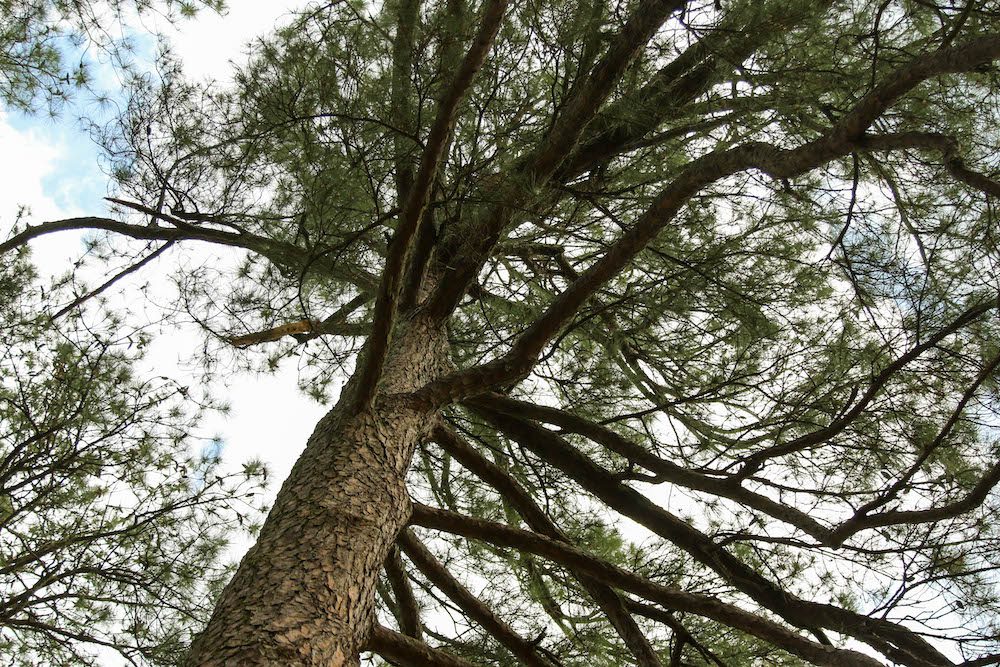
“We don’t want trees on people’s houses, we don’t want people to be afraid of their large trees, we want the air to be clean,” Broadwell said. “There are so many good things that come from taking care of the trees that improve quality of life for residents.”
Broadwell hopes that attendees left the workshop with a more holistic understanding of tree health: “I want people to get a much deeper understanding of the plants and insects and all the little things that go into a tree’s urban ecology.”
For Archibald, whose left arm is covered in tattoos of ginkgo, Japanese maple, and other leaves, the workshop opened the door to allow others into his tree-filled world.
“To educate people on what I get to see every day is fantastic,” he said, smiling. “It really has become my passion and purpose in life to talk about trees, to learn about them, and to have conversations like this.”
Above: Arborist Matt Archibald described caring for older trees recently at a free workshop in Oval Park. Photos by Abigail Bromberger — The 9th Street Journal
Nina Moske

